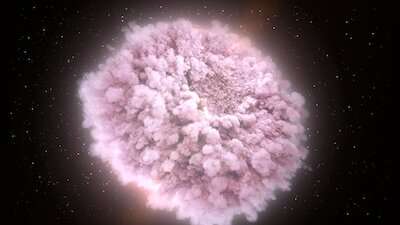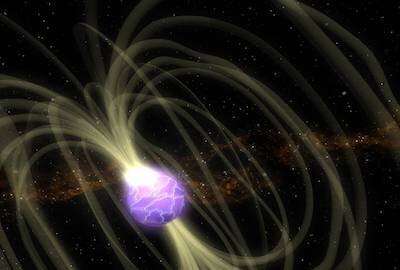Professor uncovers surprising results from nuclear reactions inside stars

Where do our elements come from? And how are they made? Michael Famiano’s new research is flipping the script on those age-old nuclear astrophysics questions. The truth is out there—several light years away among the stars, to be exact.
“I’m wearing a ring on my finger. That gold was made in space somehow. And we think we have a pretty good idea of where it came from, but there’s still lots of questions,” says Famiano, Professor and Chair of the Department of Physics at Western Michigan University.
Along with colleagues at University of Wisconsin, Kyushu University in Japan, and the National Astronomical Observatory of Japan, he’s been studying the environments inside stars where heavy metals are made—places where violent collisions and reactions could produce enough heat to create matter and antimatter.
“Things get hot enough that it’s possible to make electrons and positrons, and that changes everything we know about the environments that make elements,” he says.
Those high temperatures are exacerbated by the extremely high magnetic fields found in space. Magnetic fields of neutron stars, for example, are about a quintillion times stronger than Earth’s magnetic field.
“That changes the nuclear reactions, and it can change them pretty significantly and in pretty surprising ways,” says Famiano. “And some of the stuff we’re finding out is really interesting, because our results are almost counterintuitive.”

On October 13, Famiano will take questions at a live news briefing and present his research at a scientific talk during the 2021 Fall Meeting of the APS Division of Nuclear Physics. It will include preliminary data on the effects of high magnetic fields on accreting neutron stars. He’ll explain how high magnetic fields in X-ray bursts can actually change the composition of the ashes as well as how electron capture rates relevant to cooling might actually decrease depending on field strength, which is the opposite of what was expected.
“It may actually explain some of the strange behavior that we see in stellar environments. And it’s so broad-reaching because it affects anything that gets really hot and it affects anything that has a really high magnetic field. And you can always find that in space.”
White dwarfs become magnetic as they get older
Citation:
Professor uncovers surprising results from nuclear reactions inside stars (2021, October 12)
retrieved 12 October 2021
from https://phys.org/news/2021-10-professor-uncovers-results-nuclear-reactions.html
This document is subject to copyright. Apart from any fair dealing for the purpose of private study or research, no
part may be reproduced without the written permission. The content is provided for information purposes only.
For all the latest Science News Click Here
For the latest news and updates, follow us on Google News.

